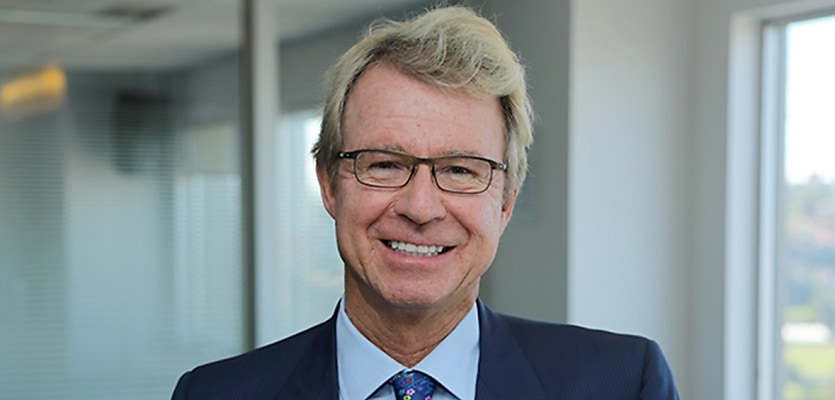While almost three-quarters of Australians owned a home outright or with a mortgage in 1966, this has now plunged to only 63 per cent, according to AMP.
In his latest insights, AMP Investments chief economist Shane Oliver referred to a joint report by AMP and demographer Bernard Salt titled What wealthy means to Australians in 2023, which said home ownership rates in Australia peaked in 1966 at 73 per cent.
However, according to Dr Oliver, this has now trended down to around 63 per cent.
“The question is whether this decline reflects deteriorating housing affordability flowing from years of property booms, leading to a fading in the ‘Aussie dream’, which is centred on home ownership or whether it’s something deeper,” he said.
“The natural inclination is to think that the fall in home ownership rate is all due to worsening affordability.”
However, Dr Oliver only partly attributed the falling home ownership rates to the significant deterioration in housing affordability since the 1990s.
Price-to-income ratio, time to save deposit blow out
While average home prices ranged around two to six times annual wages prior to the mid-1990s, it has steadily increased to around 14 times since then, he noted.
Similarly, the ratio of home prices to median household disposable income has “blown out” from around four times to eight times, Dr Oliver added.
While interest rates are still lower than it was in the 1980s and 1990s, this has been reflected in higher price-to-income ratios.
It is also taking longer for first home owners to save for a deposit to enter the property market – another measure of housing affordability.
For someone on average full-time earnings, it now takes around 10 years to save a 20 per cent deposit to buy an average property compared to around five years 30 years ago, Dr Oliver said.
Times have changed
However, housing affordability is not the only factor that has contributed to falling home ownership rates.
“The Australia of today is radically different to that of 1966 and this has surely had a big impact,” Dr Oliver said.
For example, Australians are delaying family formation into their late 20s as they are spending more time on education, starting work in their 20s, and increasingly prioritising their careers. Participation of women in the workforce has also risen, as has a desire for more experiences and travel.
Furthermore, starting with the Baby Boomers, subsequent generations have not felt the same need for security offered by home ownership their predecessors felt in the mid-1960s, Dr Oliver pointed out.
“This partly flowed from dimming memories of the travails of the Great Depression and World War Two, rising levels of economic prosperity, greater choices for spending with the growth of travel and the café culture (Bernard Salt’s “smashed avocado on five grain toast”), and a perception, based on seeing their parents’ experience, that owning a home is not necessarily the way to happiness,” he said.
Alongside this, increased life expectancy and the growth of superannuation from the early 1990s meant a larger focus on retirement and wealth beyond the home, Dr Oliver added.
“The combination of these considerations has likely contributed to some diminution in the importance of home ownership as a measure of wealth and an underpinning of security in contrast to the ‘make do/Depression generation’ and to a lesser degree their baby boomer children,” he said.
Falling housing affordability concerning
While lower home ownership rates due to choices around demographic trends, prosperity, and diversity should not be a concern, deteriorating housing affordability should be, Dr Oliver argued.
“It is driving increasing inequality including across generations and if it persists it could threaten social cohesion,” he warned.
How to boost housing affordability
Dr Oliver mused that a lot has been written about how to improve housing affordability with little progress, despite “some efforts” by governments.
“I suspect this is because they have not been comprehensive or forceful enough. Ideally government policy should involve a multi-year plan encompassing local, state, and federal governments,” he said.
Dr Oliver discouraged policies such as grants and concessions for FHBs as they are likely to increase property prices.
He also advised against abolishing negative gearing as it would “just inject another distortion” in the tax system and could adversely impact supply, but added that a cap on excessive use of negative gearing tax benefits could be warranted.
Instead, Dr Oliver’s wish list includes:
- Build more homes – relax land use rules, release land faster, speed up approval processes, and encourage build-to-rent affordable housing and greater public involvement in provision of social housing
- Match the level of immigration to housing supply – Dr Oliver said a failure to do this following the reopening from the pandemic has resulted in severe supply shortfalls.
- Tax reform – including replacing stamp duty with land tax and reducing the capital gains tax discount to remove a distortion in favour of speculation
- Encourage greater decentralisation to regional Australia with appropriate infrastructure and measures to boost regional housing supply
If you’re looking to refinance for a better rate or are looking for the right rate for your clients at zero cost, contact Finni Mortgages’ experts and let us do the hard work for you.
Visit our website here or call 1300 002 023 to learn more on how we can help you.








You are not authorised to post comments.
Comments will undergo moderation before they get published.